Nasal septal defects are a common pathology in children and adults requiring radical (surgical) treatment. This pathology is not life-threatening, but it is a pronounced cosmetic defect. Correction of the nasal septum (septoplasty) is performed according to strict indications.
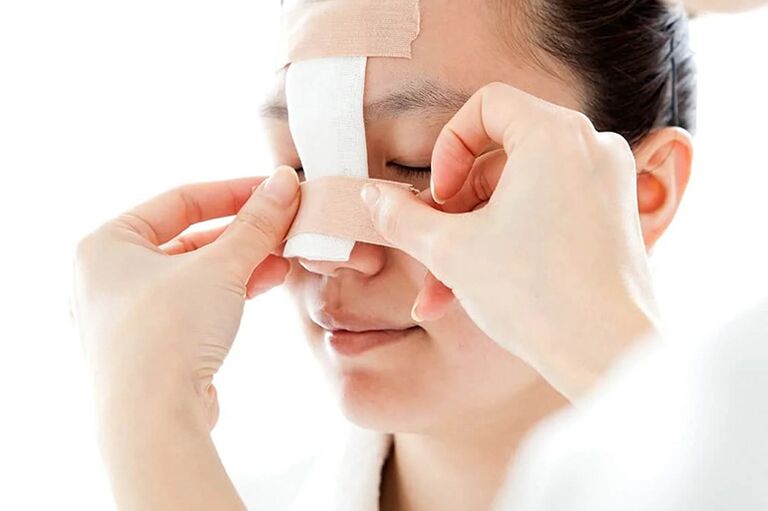
Varieties and causes of barrier defects
There are the following types of defects:
- Distortion. A condition in which the nasal septum deviates from a straight axis. This pathology is a common cause of chronic rhinitis, difficulty breathing, sinusitis and tonsillitis (inflammation of the tonsils). The curvature is physiological (congenital), traumatic and compensatory (against the background of polyps), S-shaped, horizontal, C-shaped, vertical, front or back.
- Perforation. In this pathology, a passage hole is formed in the cartilage tissue. The pathology occurs as a result of rupture of the cartilaginous tissue and detachment of the submucosa.
- Sinking the backrest. Occurs against the background of trauma and abscess. It is characterized by flattening of the bone tissue and shortening of the back.
The most common causes of a diverted nasal septum are:
- Injuries (bruises, falls). The risk group includes men and boys. Athletes (boxers, karate fighters, wrestlers, mixed martial arts fighters) are more susceptible to injury. The defect develops with a strong blow, against the background of which the osteochondral plate is displaced. Often deformation occurs with improper adhesion after fracture.
- Abnormal growth of skull bones. The large size of the nasal cavity encourages the bending of the septum. This is a compensatory response.
- Rare anomalies (strong development of the Jacobson rudiment). It limits the space for growth and development of the barrier.
- Chronic unilateral rhinitis. Nasal congestion on one side can cause distortion.
- Tumors.
- Abscesses.
- Hypertrophy (proliferation) of the sinuses.
- Complicated heredity (curvature of the nose in parents).
- Polyps.
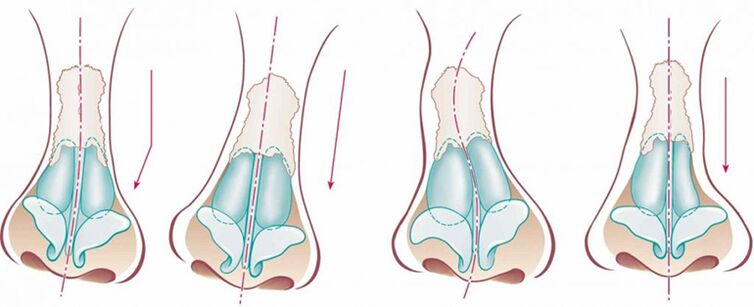
External manifestations and internal symptoms
If a person has a curved nasal septum, then the following symptoms are possible:
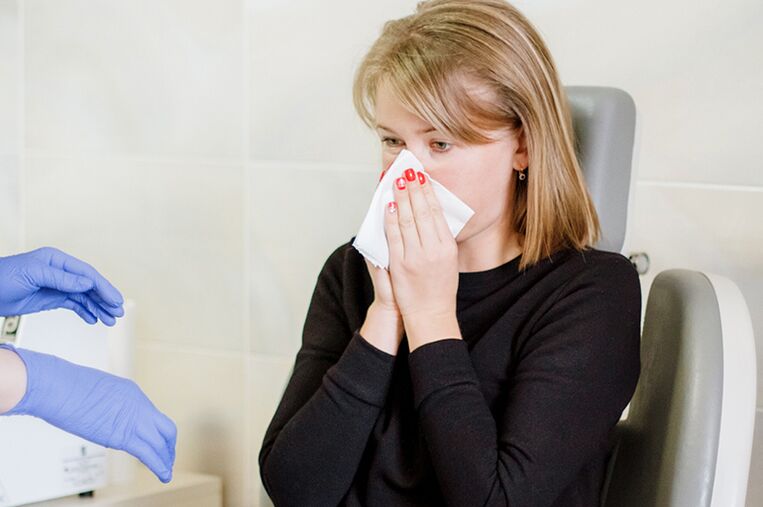
- Nasal breathing disorder. It can be mild and severe to such an extent that a person breathes only through the mouth. The absence of this symptom does not exclude the presence of a defect.
- Chronic rhinitis. This occurs as a result of impaired ventilation and multiplication of microbes.
- Common allergic reactions.
- Congestion.
- Swelling of the mucous membrane.
- Headache. This occurs against the background of congestion, complications in the form of sinusitis (sinusitis), increased pressure on the mucosa and irritation of the receptors.
- Frequent episodes of ARVI. Manifested by cough, sneezing, fever.
- Dry mucous membranes.
- Bleeding from the nose.
- Sleep apnea. Attacks of respiratory arrest during sleep.
- Snoring.
- Sleep disturbance.
- Asthenic manifestations in the form of reduced efficiency, lethargy, weakness. The reason is lack of oxygen.
- Change in the shape of the nose (deviation, depression of the back).
- Deterioration of attention and memory.
Symptoms such as cough, sweating, decreased sense of smell, tinnitus, dryness, nasal congestion, changes in facial expressions (open mouth, change in bite) are less common.
Diagnosis of the severity of the defect
The following tests allow you to identify the defect and its severity:
- Computed tomography (detects spikes, ridges and related diseases).
- NMR. It is performed when a neoplasm is suspected.
- Rhinoscopy (examination of the nasal cavity).
- Endoscopy. A tube with a camera is used.
- Rhinometry (change in airflow and the degree of congestion).
- Visual inspection.
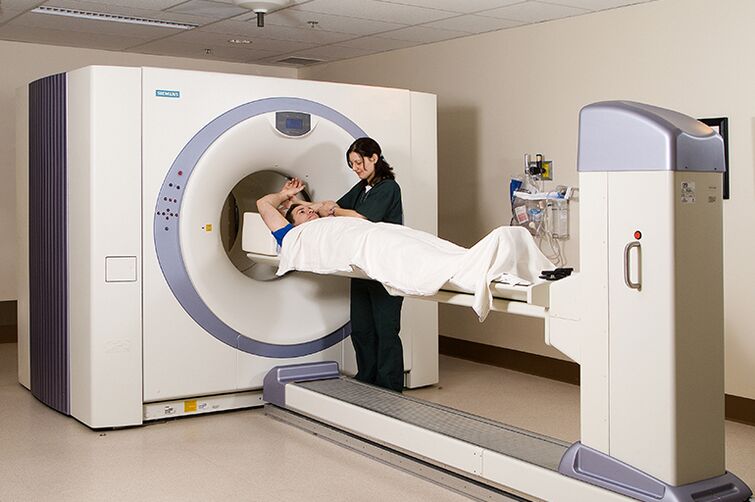
In addition, tests (allergy tests, bacteriological smear testing, clinical blood test) and examination are performed.
Methods of treatment
Elimination of the defect is possible only through surgery. The operation is called rhinoplasty. Conservative therapy is ineffective.
Which doctors to contact
If you have symptoms of a septal defect, you should see an ENT doctor (otolaryngologist). You may also need to consult a surgeon.
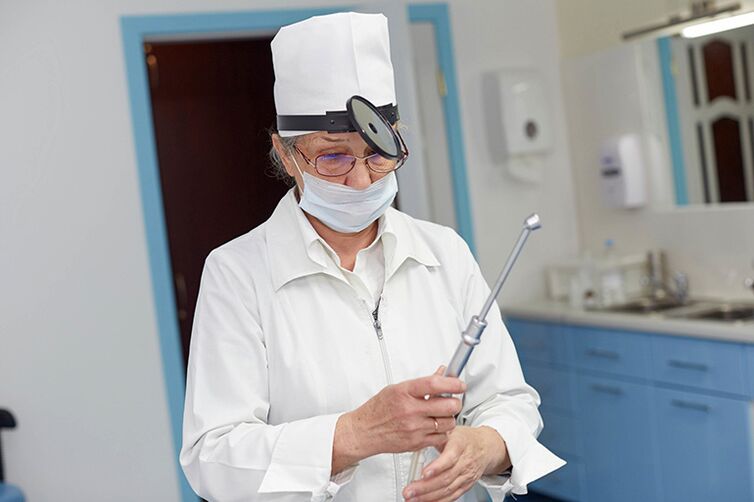
Conservative treatment
Conservative treatment is aimed at eliminating swelling and symptoms (runny nose, congestion). Saline solutions, vasoconstrictor sprays and drops may be used. Laser therapy is often performed.
Surgical intervention (septoplasty)
Septoplasty is a surgical correction of the nasal septum. It is most often performed endoscopically without incisions using a monitor and a camera. Its advantages include:
- rapid rehabilitation;
- efficiency;
- simplicity;
- minimal blood loss and trauma;
- the presence of an antiseptic effect (when using a laser).
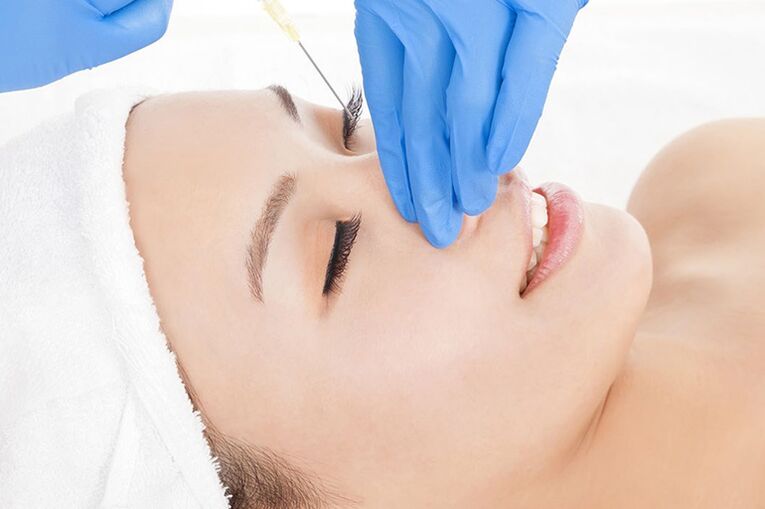
Less commonly, the method of resection or septochondroprotection is used. Before performing septoplasty, the degree of nasal dyspnea and the patient's age are taken into account.
Indications for surgery
Indications for nasal surgery are:
- difficulty breathing;
- the presence of chronic rhinitis;
- ear infection;
- strong headache;
- pronounced cosmetic defect;
- sinusitis;
- pronounced snoring;
- regular nosebleeds.
Contraindications to surgery
Surgical correction of the nasal septum is contraindicated:
- elderly patients,
- with haemophilia (blood clotting disorder),
- severe heart disease,
- mental disorders
- diabetes,
- crab,
- severe infections,
- hypertension,
- during the flowering period of the plants (with allergies),
- during pregnancy,
- breastfeeding the baby.
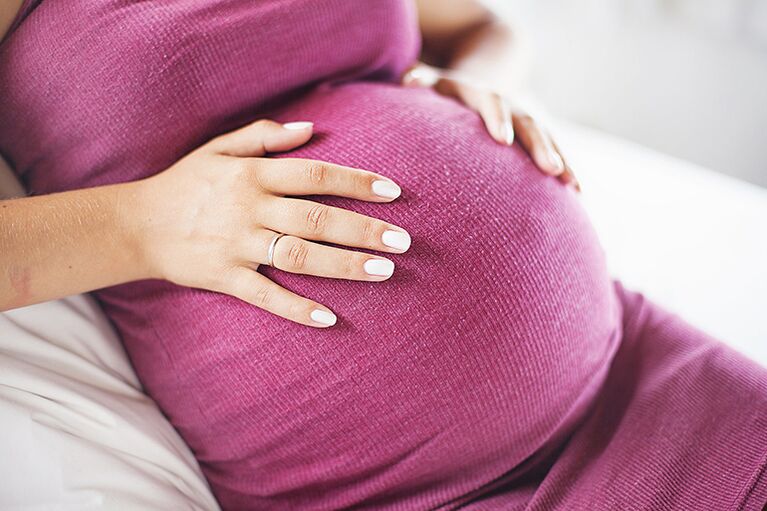
Preparation for septoplasty
Nasal straightening is performed after tests (for HIV, syphilis, coagulograms), consultation with specialists (therapist, ENT doctor, anesthesiologist), premedication and anesthesia.
In the evening it is recommended not to eat later than 6 pm and to cleanse the intestines.
It is important to sanitize the oral cavity (to cure all diseases, including sore throat, rhinitis, pharyngitis).
For women, it is recommended to restore the correct shape of the nose 2 weeks after menstruation.
Features of the postoperative period
After the operation to correct the nasal septum it is necessary:
- wear cotton turundi in the nose for 1-2 days;
- take antibiotics for prophylactic purposes;
- observed by a doctor (a specialist should rinse the nose, clean it of scabs and blood).
Prohibited during the rehabilitation period
After rhinoplasty it is recommended:
- avoid heavy loads;
- refuse to visit baths and saunas;
- don't poke your nose;
- do not overcool;
- turn off the pressure drop and temperature (cancel flights, climb, swim).
The effectiveness of surgery
Photos of people before and after surgery vary dramatically.
Removing the defect removes the cosmetic defect and all symptoms, making breathing easier.
The efficiency reaches 95-100%.
Complications after correction of the nasal septum
Correction of the nasal septum at the present stage of development of medicine, the operation is simple. However, there may be postoperative complications.
The consequences of surgery can be adhesions, tissue fusion, hematoma or abscess formation, infection, allergy to anesthesia, ethmoid plate damage, decreased sense of smell, perforation, blurred vision and nerve damage.




















